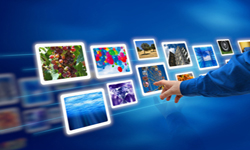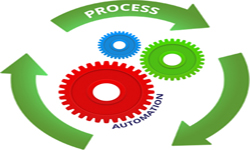Digitization
Digitization is the process of converting information into a digital format . In this format, information is organized into discrete units of data (called bits) that can be separately addressed (usually in multiple-bit groups called bytes). This is the binary data that computers and many devices with computing capacity (such as digital cameras and digital hearing aids) can process.
Text and images can be digitized similarly: a scanner captures an image (which may be an image of text) and converts it to an image file, such as a bitmap . An optical character recognition ( OCR ) program analyzes a text image for light and dark areas in order to identify each alphabetic letter or numeric digit, and converts each character into an ASCIIcode.
Audio and video digitization uses one of many analog-to-digital conversion processes in which a continuously variable (analog) signal is changed, without altering its essential content, into a multi-level (digital) signal. The process of sampling measures the amplitude(signal strength) of an analog waveform at evenly spaced time markers and represents the samples as numerical values for input as digital data.





